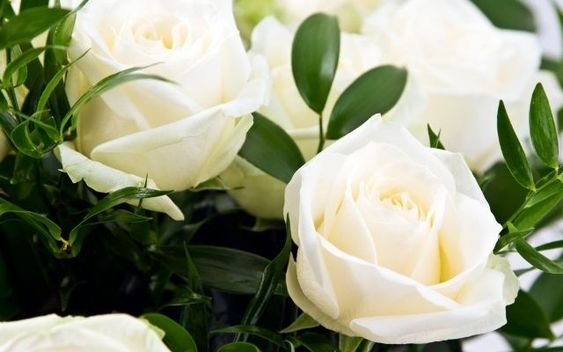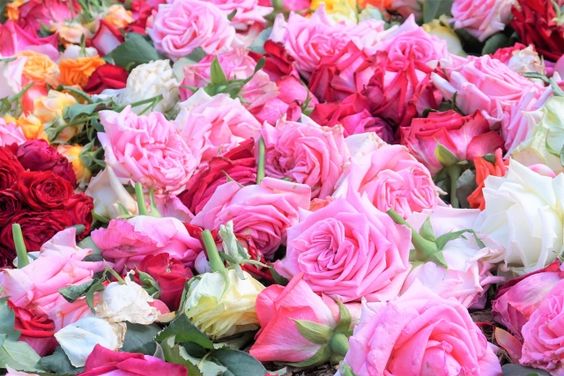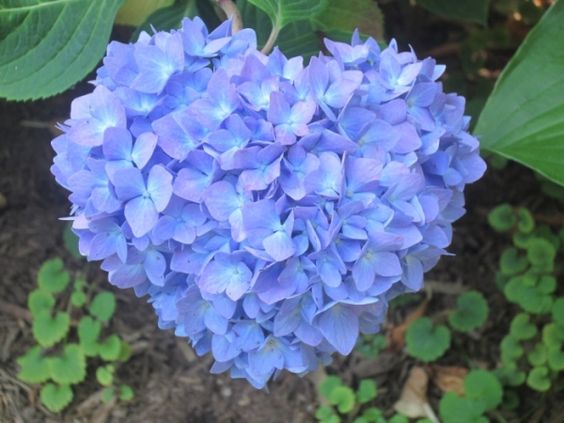Introduction
Sending flowers has long been a cherished gesture of expressing sentiments and emotions. Among the various cultures that value this tradition, Europe stands as a region where the act of sending flowers holds significant cultural importance. Whether it’s celebrating a joyous occasion or conveying sympathy during times of sorrow, understanding the conditions for sending flowers to Europe is essential to ensure that this heartfelt gesture is received in the intended manner.
Cultural Significance of Sending Flowers to Europe
Sending flowers to Europe is an art steeped in history, and each country within the region has its unique set of customs and traditions associated with it. From the romantic allure of red roses in France to the vibrant tulips of the Netherlands, flowers are woven into the cultural fabric of Europe. This practice is not just about exchanging petals; it’s about expressing emotions and respect for traditions.
Floral Selection and Arrangement
Selecting the appropriate type of flowers holds paramount importance when sending flowers to Europe. Different flowers hold distinct meanings across cultures. For instance, roses are symbols of love and passion, making them an ideal choice for romantic occasions. Lilies, on the other hand, are often associated with funerals in several European countries, and sending them as a gesture of sympathy is considered respectful. The arrangement of flowers also holds significance. Europeans appreciate well-thought-out bouquets that reflect thoughtfulness and attention to detail.

Occasions and Timing
Sending flowers to Europe is particularly common during occasions like birthdays, anniversaries, weddings, and funerals. The timing of flower delivery also matters significantly. It is customary to send flowers in advance for major events, ensuring that they arrive on the day of the celebration. Additionally, European countries often have specific flower-related holidays or festivals, such as Spain’s “Dia de Todos los Santos,” where families visit cemeteries to honor their departed loved ones with flowers. Acknowledging these occasions can make your gesture more meaningful.
Etiquette and Symbolism
Understanding the cultural symbolism associated with different flowers is vital when sending flowers to Europe. For instance, in Greece, yellow flowers are often avoided, as they symbolize bad luck. Similarly, white lilies are generally associated with funerals across many European countries, and sending them for celebratory occasions might be considered inappropriate. Therefore, conducting research on the cultural connotations of flowers is crucial to avoid inadvertently conveying the wrong message.
To read the article Click”Common Mistakes in Indoor Plant Care”
Local Flora and Sustainability
While roses and lilies remain popular choices, incorporating local and seasonal flowers into your bouquet can add an extra layer of thoughtfulness. Europeans hold a deep appreciation for their native flora, and using locally sourced flowers can show respect for their environment and culture. Additionally, embracing sustainable practices, such as choosing eco-friendly packaging and supporting local florists, aligns with the growing concern for environmental conservation in Europe.
Language Barriers and Card Messages
When sending flowers to Europe, it’s not just the choice of flowers that requires careful consideration; the message attached to the bouquet matters too. While English is widely spoken, including a translated message in the recipient’s language can add a personal touch to your gesture. Be sure to research cultural norms surrounding card messages, as sentiments vary from one country to another. In some cultures, lengthy expressions of gratitude may be appreciated, while in others, a concise and heartfelt note is preferred.
Local Customs and Traditions
Each European country has its customs and traditions regarding flower etiquette. For instance, in Italy, it’s customary to give an odd number of flowers, excluding 13, as an even number is often associated with funerals. In contrast, odd numbers are considered lucky. Similarly, in France, chrysanthemums are often reserved for gravesites, so it’s wise to avoid them in celebratory bouquets. Taking the time to acquaint oneself with these local customs showcases cultural sensitivity and enhances the impact of your gesture.
In the realm of cross-cultural communication, few gestures hold as much significance as sending flower to Europe. The act of sending flowers to Europe, as explored in the previous sections, encompasses a myriad of nuances that extend beyond mere botanical beauty. As we delve further into the realm of floral etiquette, the complexities and subtleties of sending flower to Europe come into sharper focus.
Cultural Sensitivity and Sending Flower to Europe
The act of sending flowers to Europe is not a one-size-fits-all endeavor. Rather, it’s a delicate art that requires a profound understanding of the cultural tapestry woven across the continent. Each time one engages in sending flower to Europe, they embark on a journey through a labyrinth of traditions and customs. The key lies in recognizing that the practice of sending flower to Europe is a gateway into the hearts and minds of the people, enabling us to express sentiments without words.
Expressing Sympathy through Sending Flower to Europe
In moments of grief and loss, sending flower to Europe takes on a special significance. The act of sending flower to Europe during times of mourning is a universal language of compassion. While the type of flowers and their colors can vary, the gesture itself remains a steadfast symbol of solidarity. The practice of sending flowers to Europe during these somber times underlines the importance of shared humanity, transcending geographical boundaries.

Bridging Distances: Sending Flower to Europe in the Digital Age
In the modern era, technology has revolutionized the way we approach sending flowers to Europe. Online platforms now enable sending flower to Europe with just a few clicks, making it convenient for people across continents to convey their emotions. Yet, despite the digital veneer, the essence of sending flower to Europe remains rooted in the timeless values of respect and appreciation. This transformation in the act of sending flower to Europe reflects the interconnectedness of our global society.
From Gesture to Tradition: The Legacy of Sending Flower to Europe
Through generations, the act of sending flower to Europe has evolved into a tradition that binds families, friends, and communities. Each instance of sending flowers to Europe contributes to the collective memory, weaving a narrative of shared experiences. The repetition of this ritual doesn’t diminish its value; rather, it reinforces the emotional resonance that sending flower to Europe holds. It’s a testimony to the endurance of human emotions across time and space.
Adapting to Change: Modern Variations in Sending Flowers to Europe
While the essence of sending flower to Europe remains constant, the practice has evolved to accommodate contemporary sensibilities. Today, sending flower to Europe can signify celebrations beyond the traditional occasions. From sending flowers to Europe to mark professional achievements to commemorating milestones, the gesture has transcended its origins to become a versatile means of expressing various emotions.
The Universal Language of Sending Flower to Europe
Sending flowers to Europe speaks a language that transcends linguistic barriers. It’s a way of saying “I care,” “I remember,” and “I stand by you” without uttering a single word. In every sending of flowers to Europe, a silent dialogue unfolds – a conversation between hearts that knows no borders. The beauty of sending flower to Europe lies in its ability to evoke feelings that are universally understood, reminding us of our shared human experiences.
Cultivating Relationships through Sending Flowers to Europe
Relationships, whether personal or professional, flourish when nurtured by gestures that convey thoughtfulness. Sending flower to Europe, with its inherent grace and elegance, exemplifies this principle. Each sending of flowers to Europe nurtures a connection, fostering goodwill and camaraderie. The rhythm of sending flowers to Europe becomes a part of the shared history, embodying the sentiment that strengthens bonds.
To read the article Click”Introduction to the World’s Best-Selling Flowers”
Sending Flower to Europe: A Continuum of Meaning
In conclusion, sending flower to Europe is not a static act but a continuum of meaning. It’s a journey through cultures, emotions, and expressions, with each sending of flowers to Europe adding to its rich tapestry. The phrase “sending flowers to Europe” encapsulates a world of sentiments, customs, and experiences. It’s a phrase that resonates with universal human values – the desire to connect, to console, to celebrate, and to share.
In exploring the conditions, traditions, and significance of sending flower to Europe, we unravel a tapestry woven with threads of culture, emotion, and history. The act of sending flower to Europe is a testament to our ability to communicate without words and a reminder that amidst our diversity, we are united by the universal language of heartfelt gestures.
Order to send flowers and gifts to Shahrkado
Shahrkado is one of the most reliable collections through which you can send special and customized gifts, books and cultural gifts and gift packages to your loved ones inside Iran. Our colleagues at Shahrekado Collection are trying to prepare your orders as soon as possible and send them to your loved ones inside Iran. In addition, you can send flowers to your loved ones inside and outside of Iran in any city where they live through Shahrkado collection.
Conclusion
Sending flower to Europe transcends a mere exchange of blooms; it is a bridge that connects hearts, cultures, and emotions. To navigate this time-honored tradition successfully, understanding the conditions for sending flowers to Europe is essential. From the selection of flowers to the cultural symbolism they carry, from the appropriate occasions to the timing of delivery, every aspect plays a crucial role. By respecting local customs, embracing sustainability, and carefully crafting messages, you can ensure that your gesture of sending flower to Europe is not only appreciated but also becomes a cherished memory in the recipient’s heart.

















